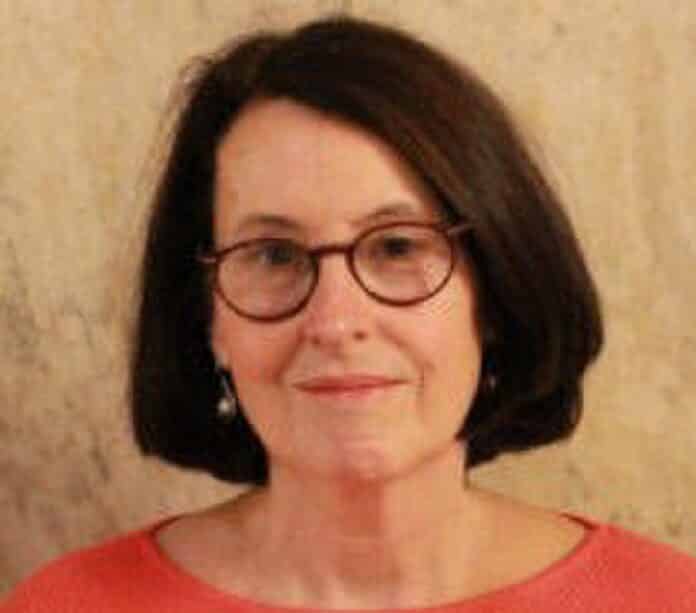By Mary Beth Schneider TheStatehouseFile.com INDIANAPOLIS—I’ve spent a lot of years in the Indiana Statehouse, but paid more attention to the living beings there than the stone replicas of Hoosiers past. Only recently did I notice that women and minorities are, to say the least, underrepresented. That’s true of today’s lawmakers, too. But only the […]
The post Commentary: Honoring women in Indiana? Set it in stone appeared first on TheStatehouseFile.com.
I’ve spent a lot of years in the Indiana Statehouse, but I’ve paid more attention to the living beings there than the stone replicas of Hoosiers past.
Only recently did I notice that women and minorities are, to say the least, underrepresented. That’s true of today’s lawmakers, too. But only the voters can change that. The marble busts and statues, though, could be changed any time our state government realizes the same thing I did.
Take a look at the inventory. On the second floor there are seven busts, all men. There are two plaques for women, one honoring Frances Elizabeth Willard of the Women’s Christian Temperance Union and one for Sarah Tittle Bolton, dubbed “Indiana’s pioneer poet.”
On the third floor, there are eight busts, of which seven are men. The eighth is former U.S. Rep. Julia Carson. She’s also one of only two minorities honored in the Statehouse; the other is Sherman Minton, elected in 1880 as the first African-American to serve in the Indiana General Assembly.
The fourth floor has busts of four men, a giant bison named Abe and, yes, a statue of a woman. Not a real woman, though; a goddess dubbed “Indiana.”
Indiana seems really into honoring pretend women. In the Rotunda there are eight statues, six of which are female figures representing agriculture, commerce, justice, liberty, history and art. Because nothing says commerce and farming like a toga-wrapped, sandal-wearing beauty who was barred from even voting for some guy in the Statehouse until 1920.
One would think Indiana could make room for more real women. Heck, there’s even one empty niche on the fourth floor.
The goddess Indiana, a statue at the Indiana Statehouse.
Besides, it’s not as if every bust of a man in the Statehouse is deserving of the honor. Two in particular – Daniel Wesley Voorhees and Ashbel Parsons Willard — should be consigned to a museum, not a government building that should represent equality and justice.
Voorhees, who served in Congress starting in the 1860s, didn’t want slavery in Indiana, but said: “They have a right to it elsewhere; property in slaves is not to be distinguished from other kinds of property which are protected by the same constitution.”
Yes, he saw people as property, no different than cattle or a pair of shoes.
Willard, elected governor in 1856, not only supported slavery, he also supported the law that said runaway slaves who escaped to freedom had to be returned to their “owner” if captured.
The worst thing someone ever did or said may not negate every good thing they did. But it certainly should disqualify them from holding one of a handful of spots highlighting Hoosiers whose lives should still resonate with us today.
Alternatives are plentiful.
I’d nominate Dr. Mary F. Thomas, an abolitionist, a physician who cared for wounded soldiers at Vicksburg and an ardent supporter of women’s rights. In short, a far better representative for Hoosier women than that goddess statue on the fourth floor.
In 1859, she became the first woman to even get to speak on the floor of the legislature, as she presented a petition calling for giving women the right to vote and own property. “As mothers, as wives, as daughters, as sisters, and lastly as human beings, alike responsible with yourselves to God for the correct use of the rights bestowed on us, we come to you, humiliating as it may be to ask these rights at the hands of others possessing no more natural rights than ourselves.”
They blew her off.
Instead of slavery apologists, how about honoring a slave who won her freedom? Polly Strong was born a slave in the late 1700s, and at age 10 was bought by a Vincennes innkeeper. The 1816 state constitution, though, said Indiana was a free state – so she sued all the way to the Indiana Supreme Court and in 1820 she won, as the court ruled “slavery can have no existence” in Indiana. She was a free woman – and though other slaves remained in Indiana, the principal was set even if racism continued.
Which is why we also should honor Katherine “Flossie” Bailey. She founded the Marion chapter of the NAACP and sought justice for Abe Smith and Tom Shipp, two black men lynched in Marion in 1930. Her fight to prosecute those responsible led to two arrests – but an all-white jury acquitted them. The least the state can do is remember her.
These images matter. Honoring those who fought for freedom shouldn’t just be a history lesson. In the Statehouse, it should be set in stone.
Mary Beth Schneider covered Indiana government and politics for The Indianapolis Star for more than 20 years. She now writes for the StatehouseFile.
Mary Beth Schneider is an editor at TheStatehouseFile.com, a news website powered by Franklin College journalists.



